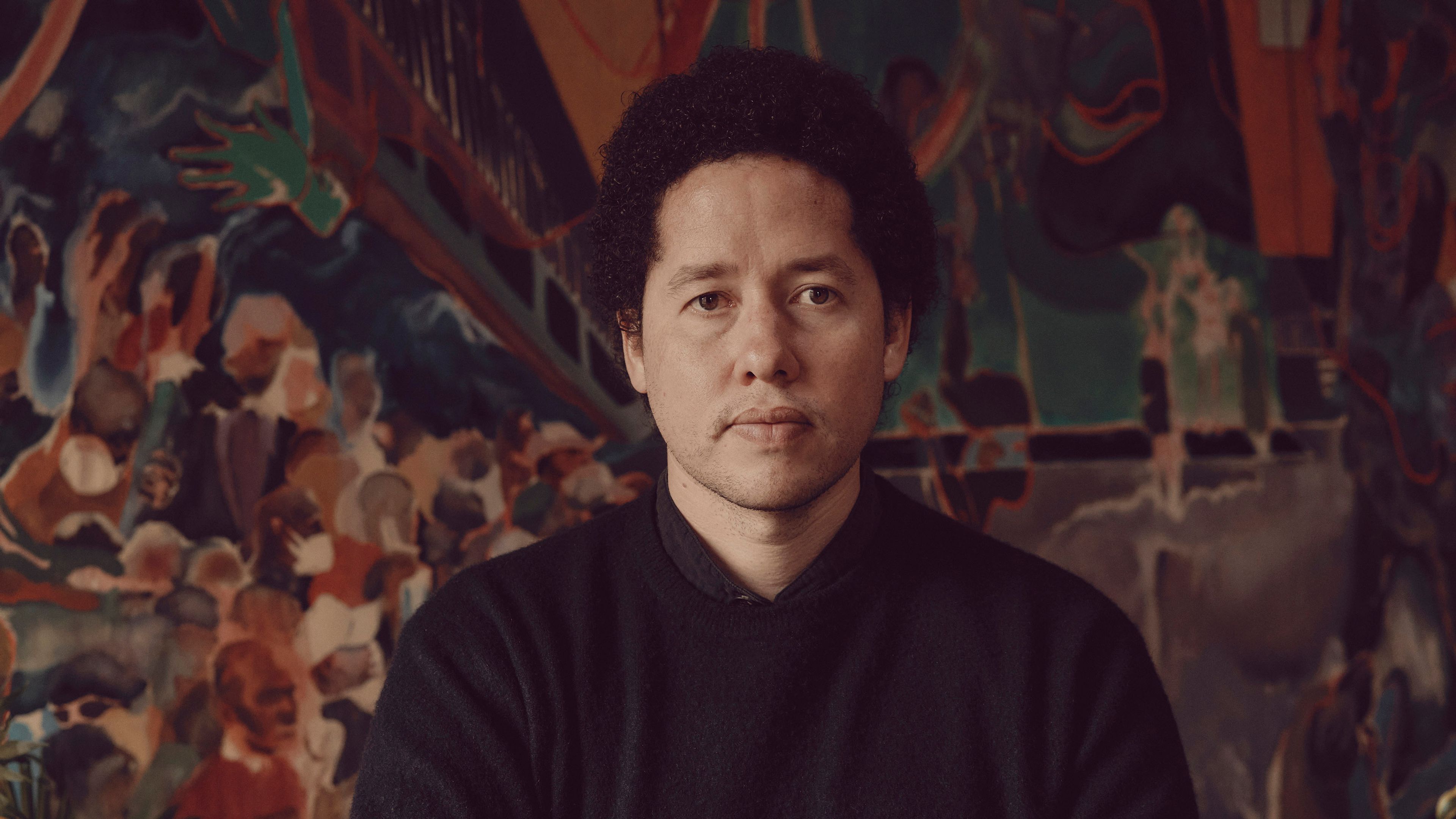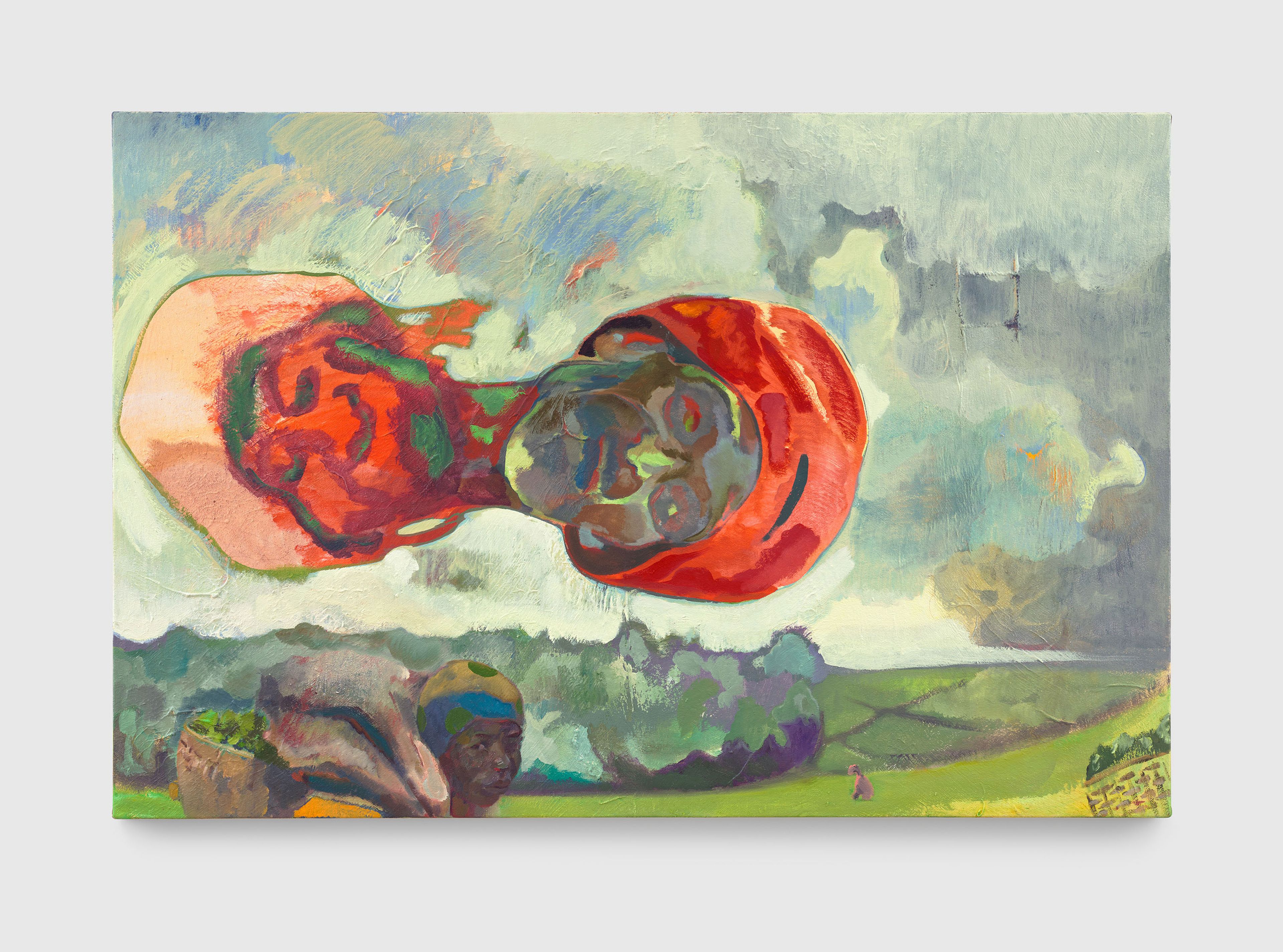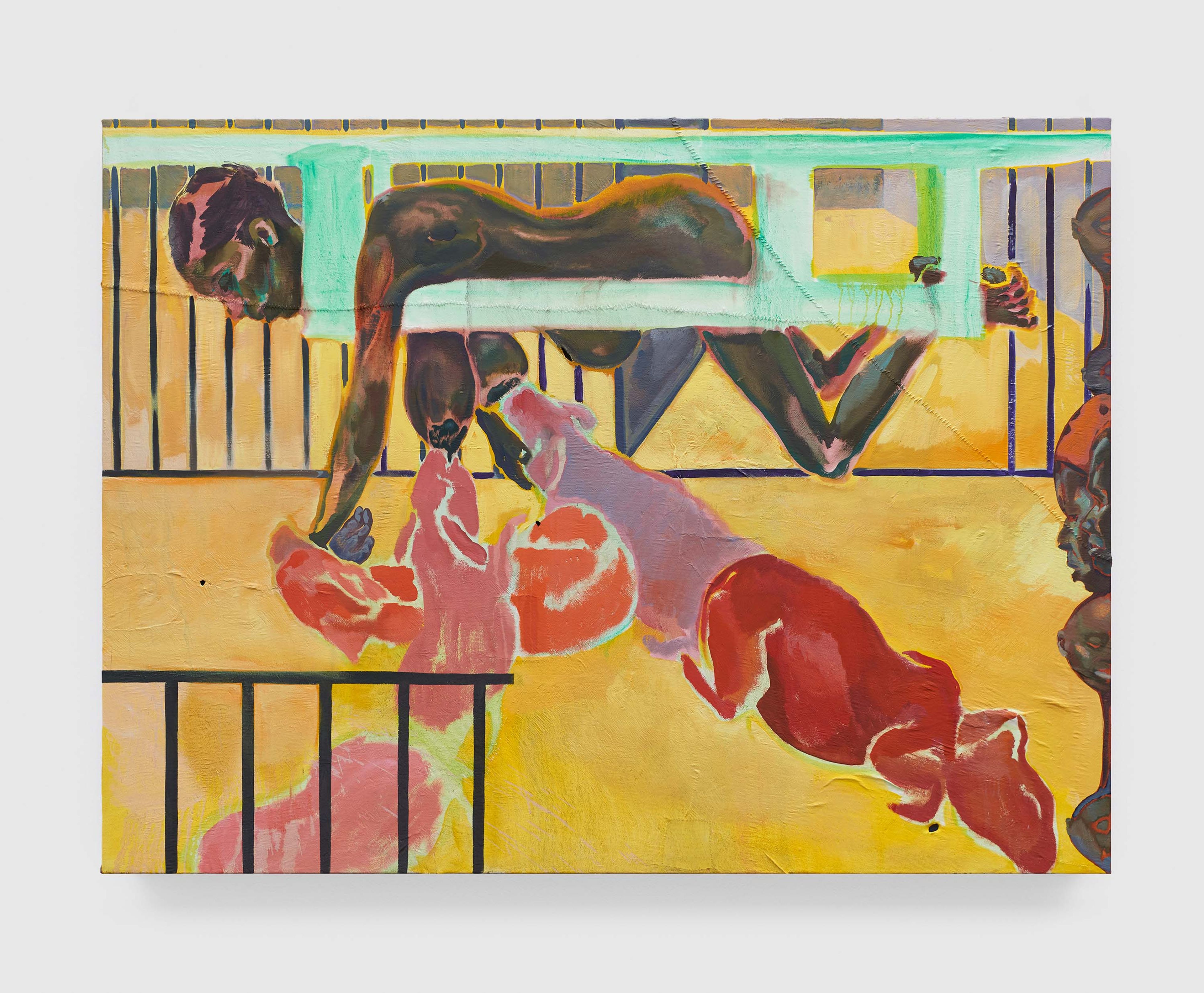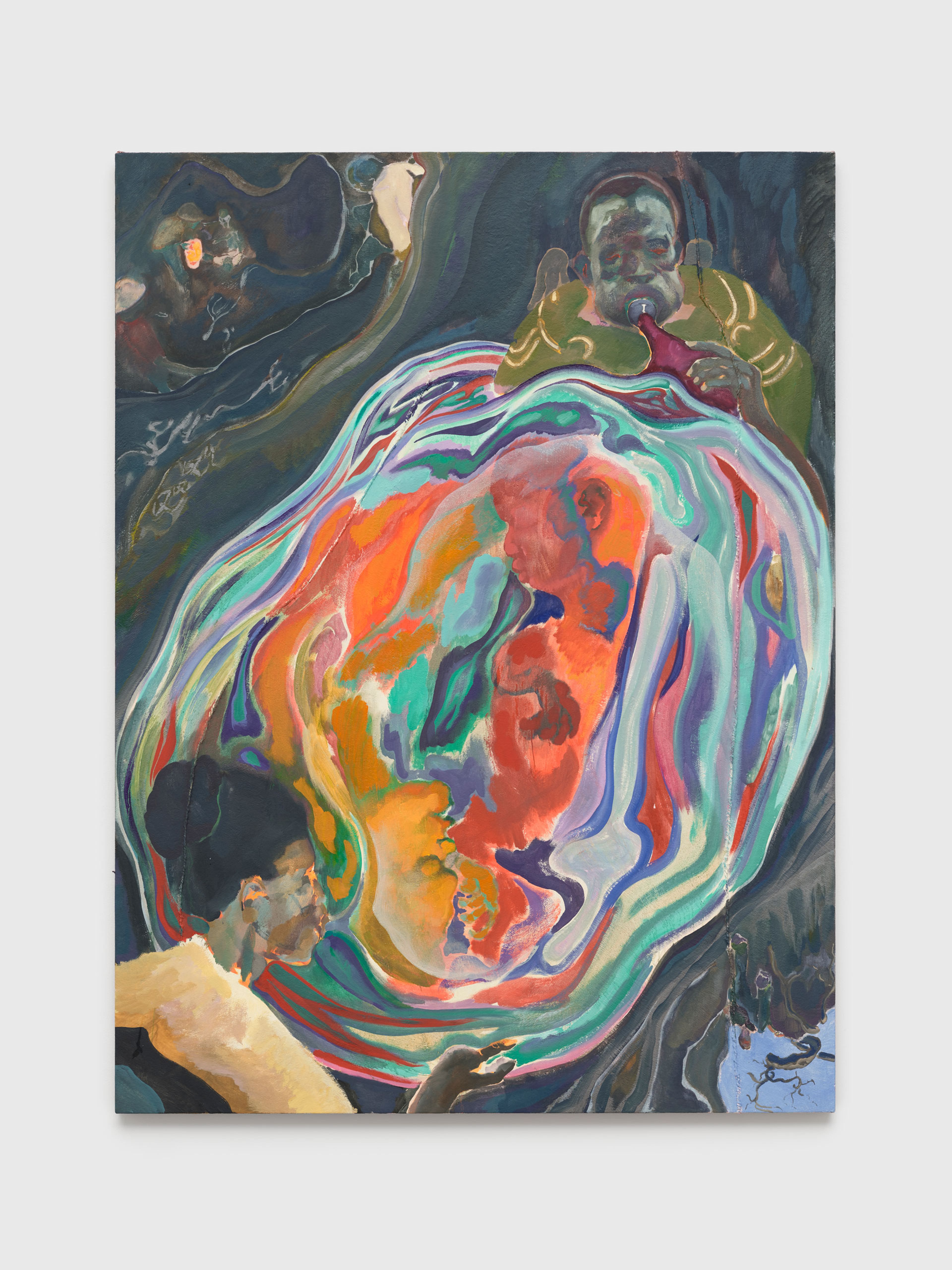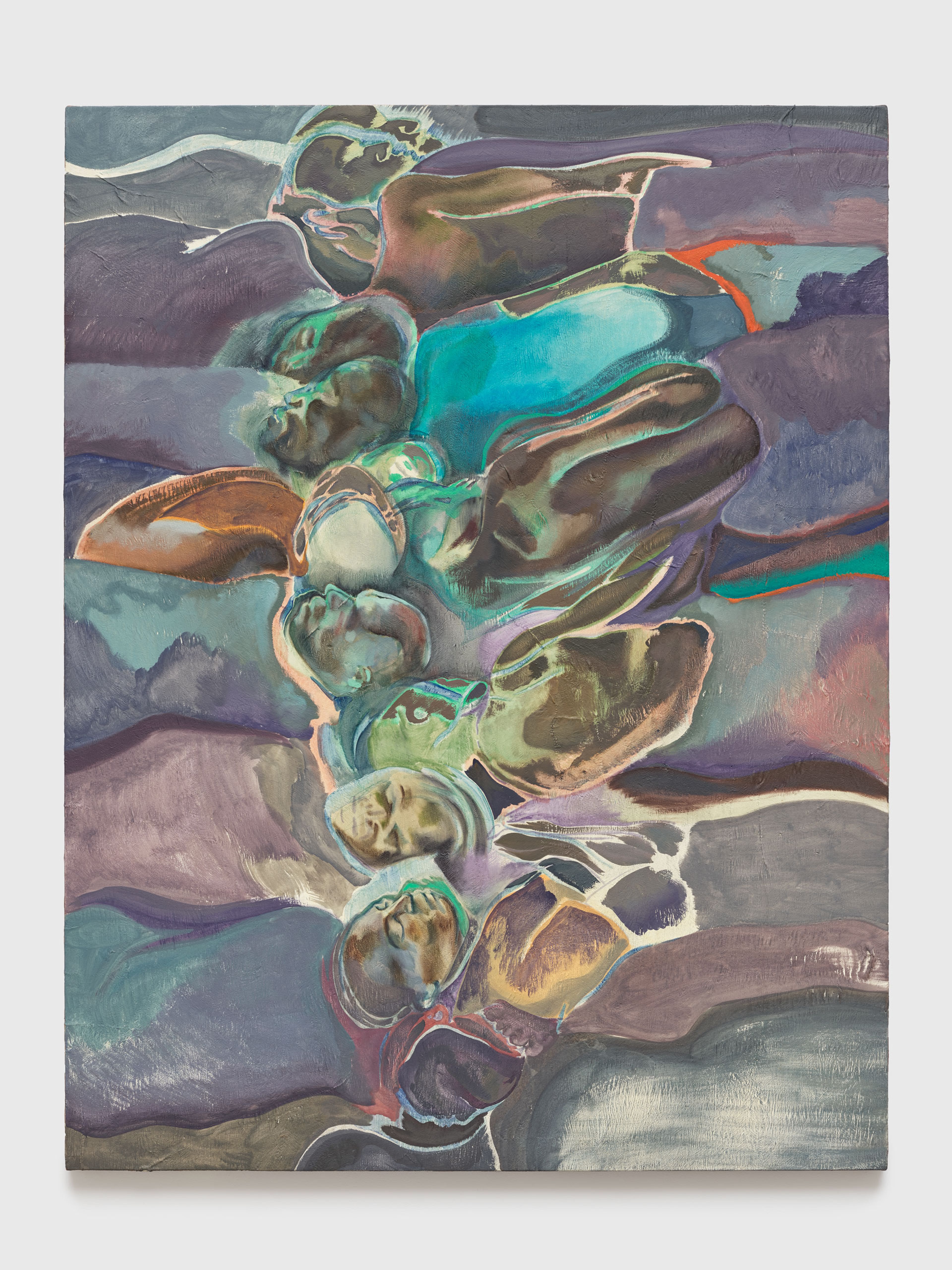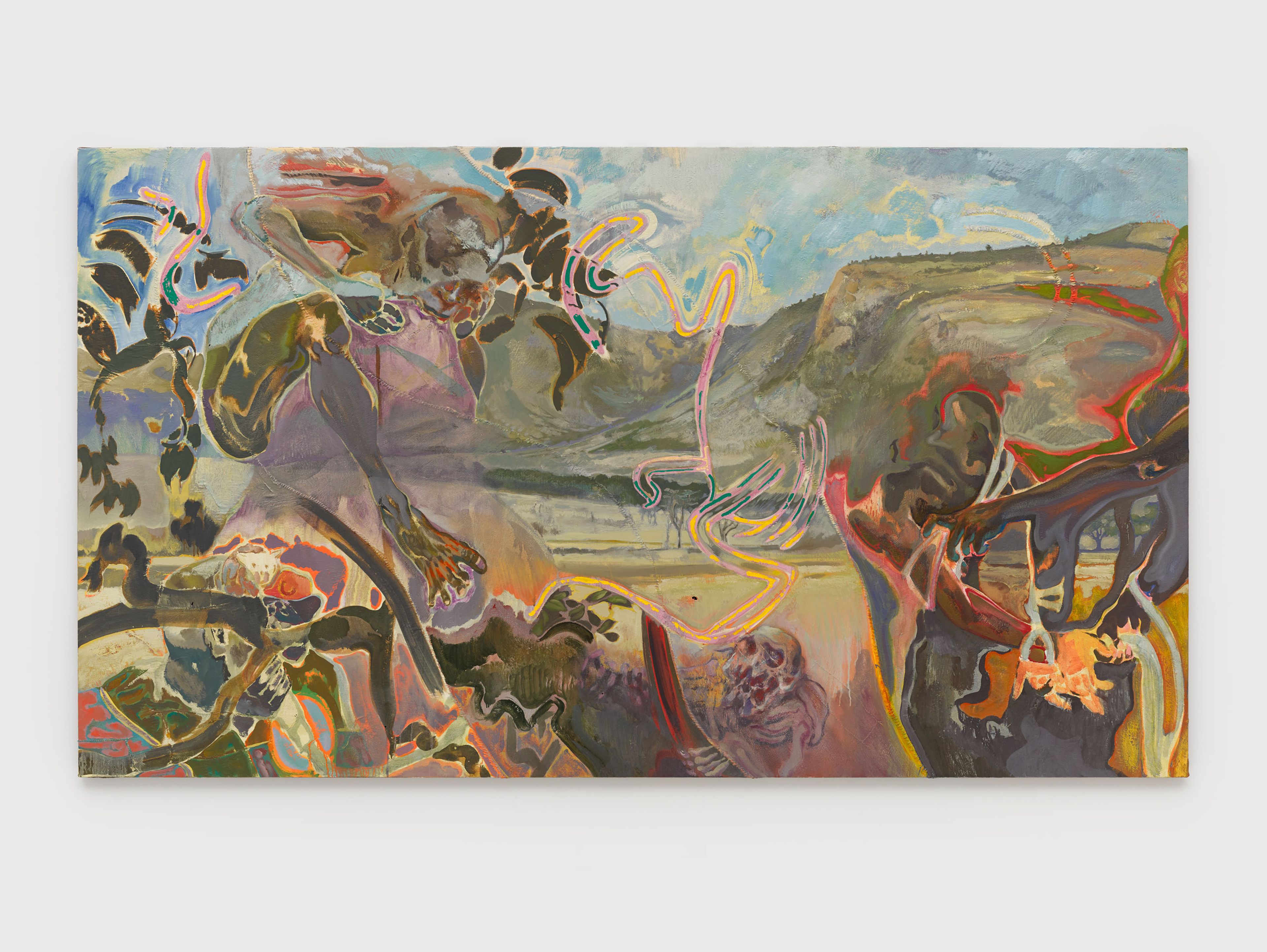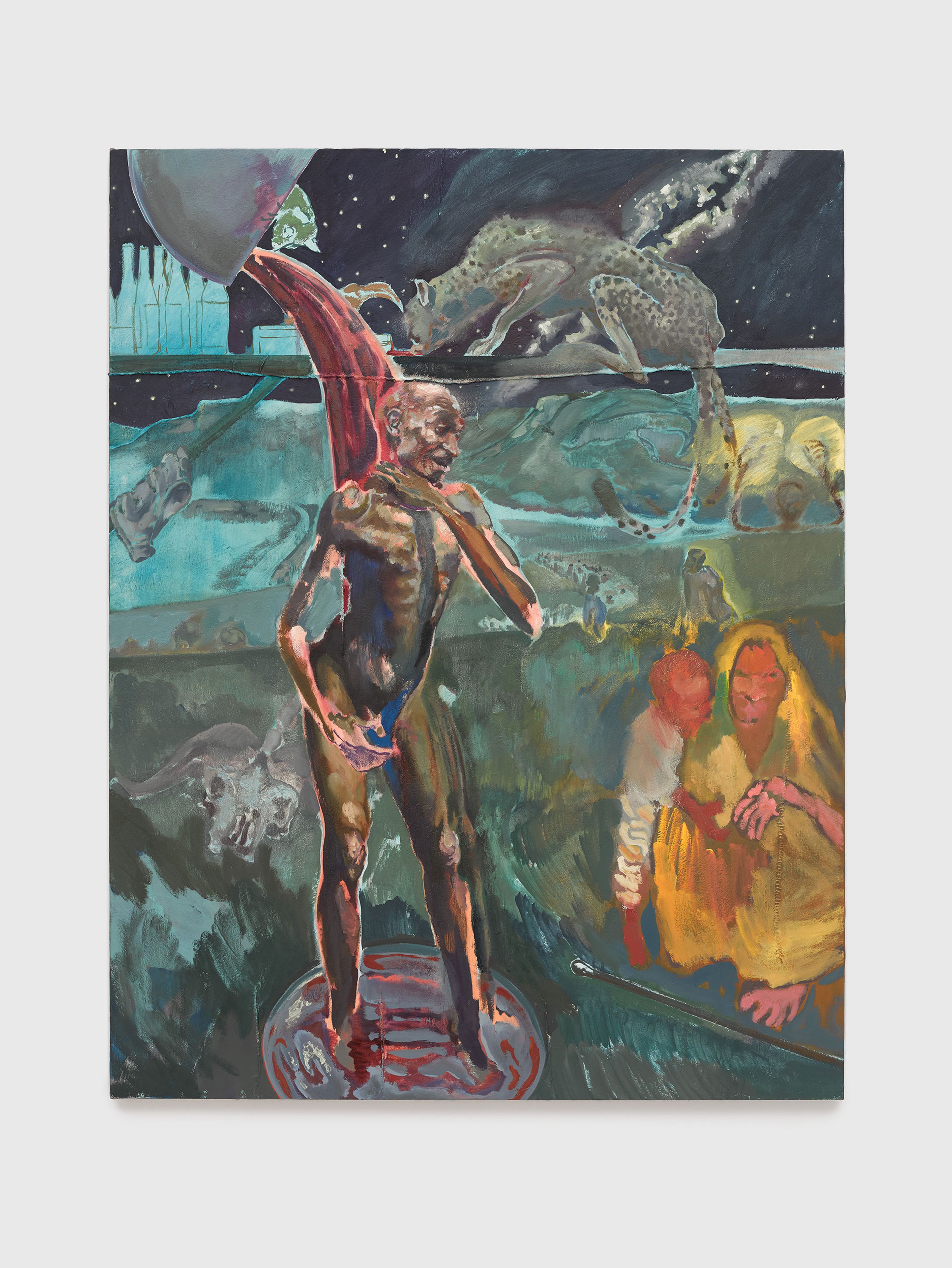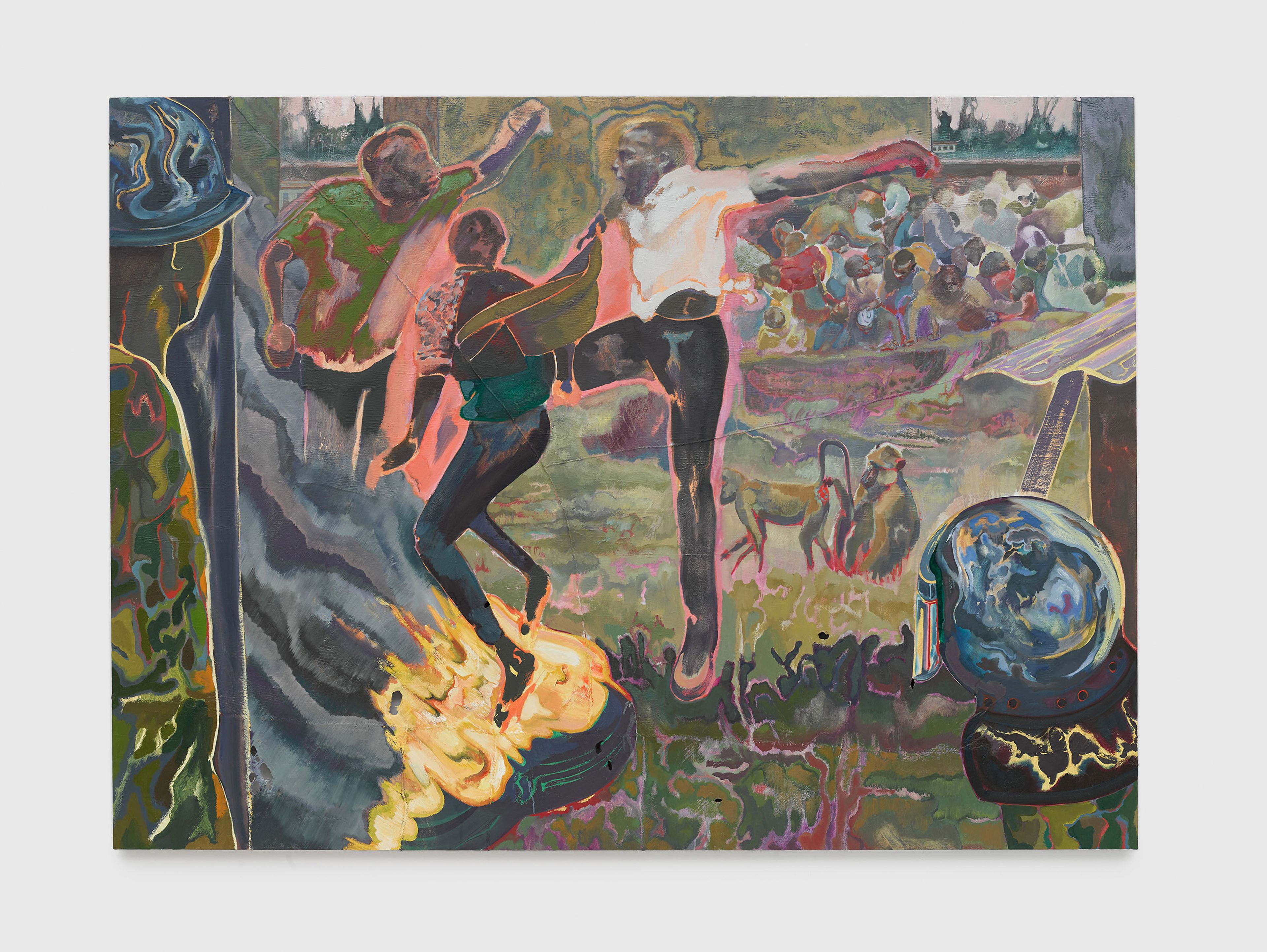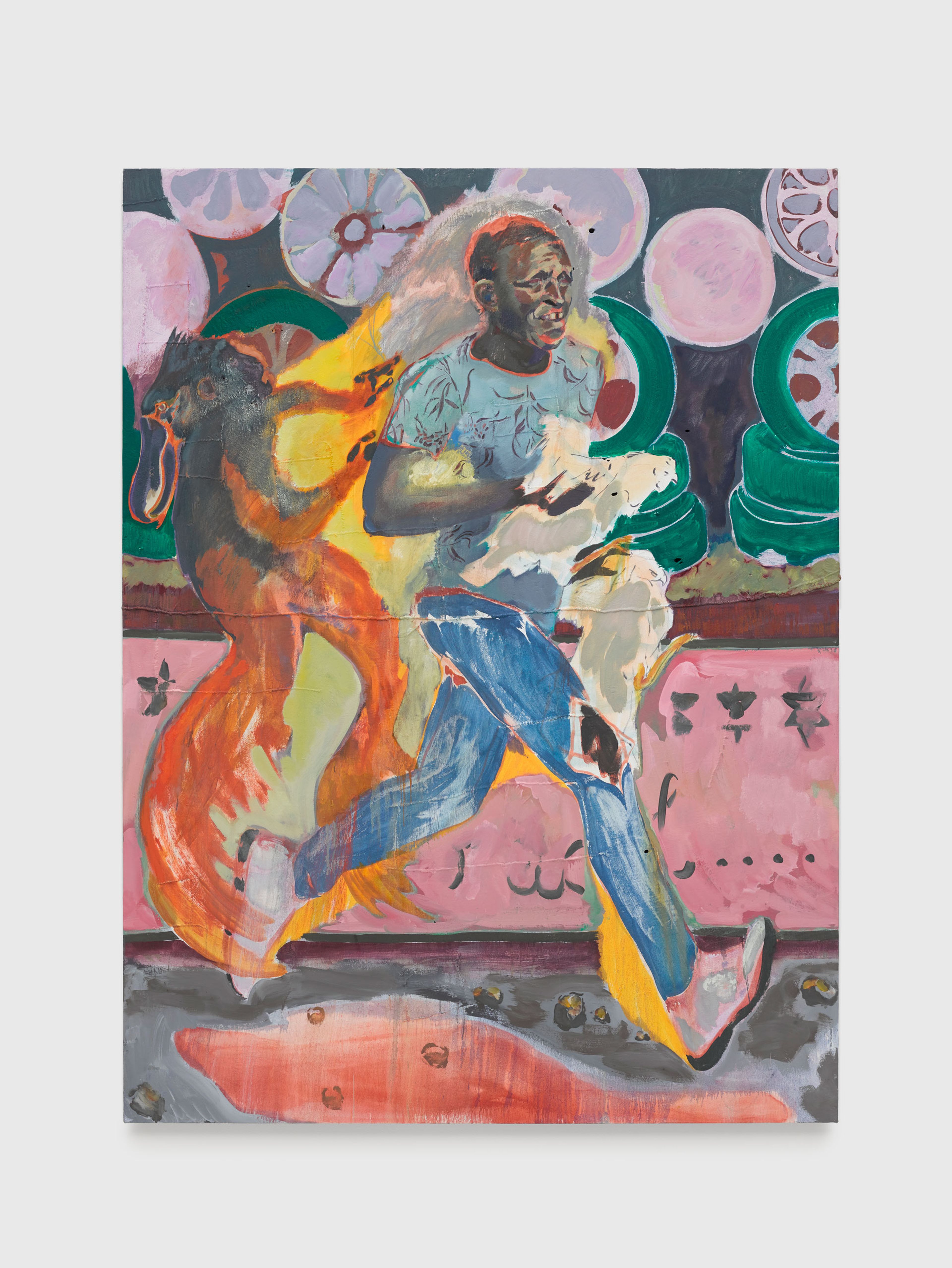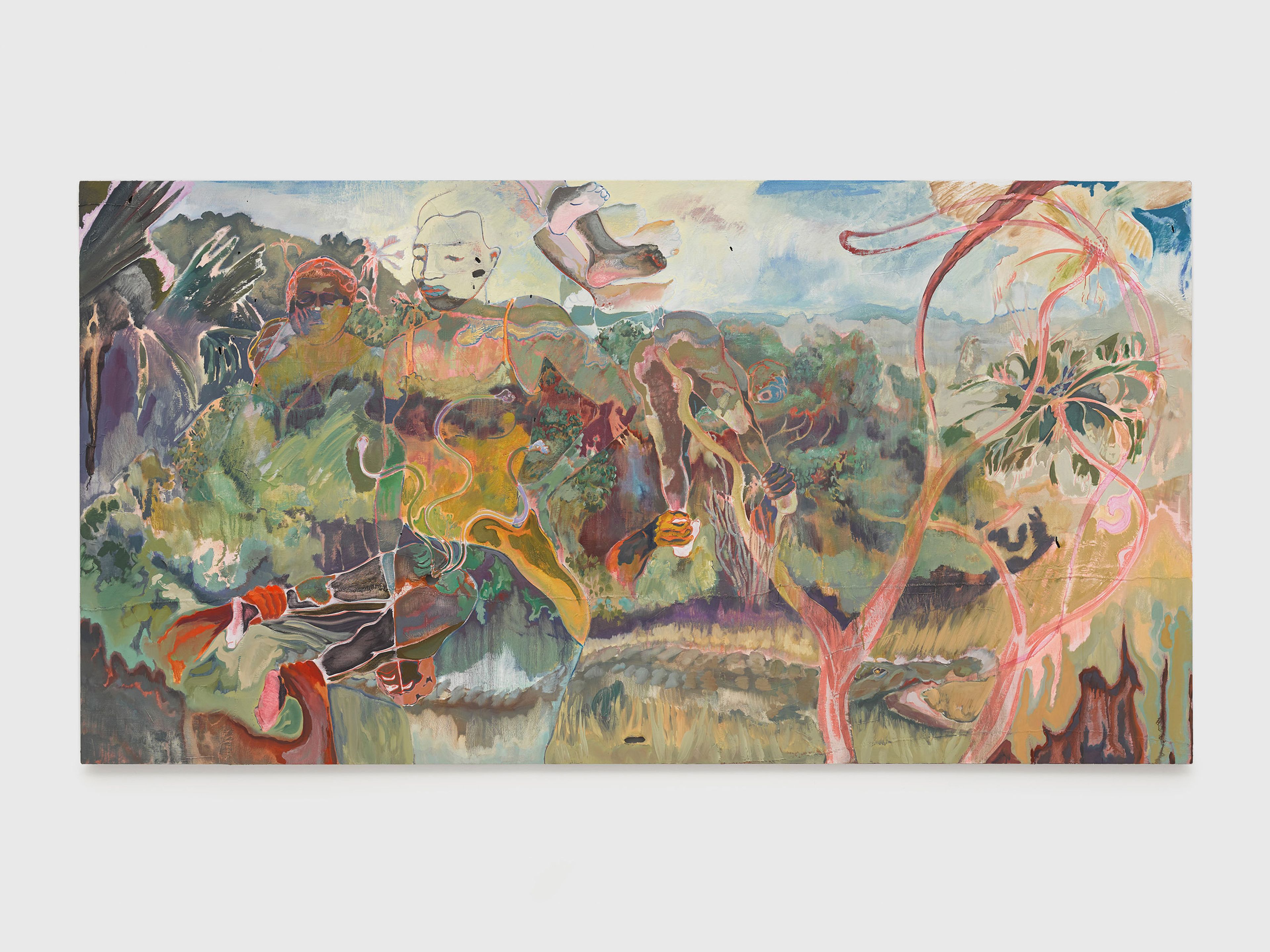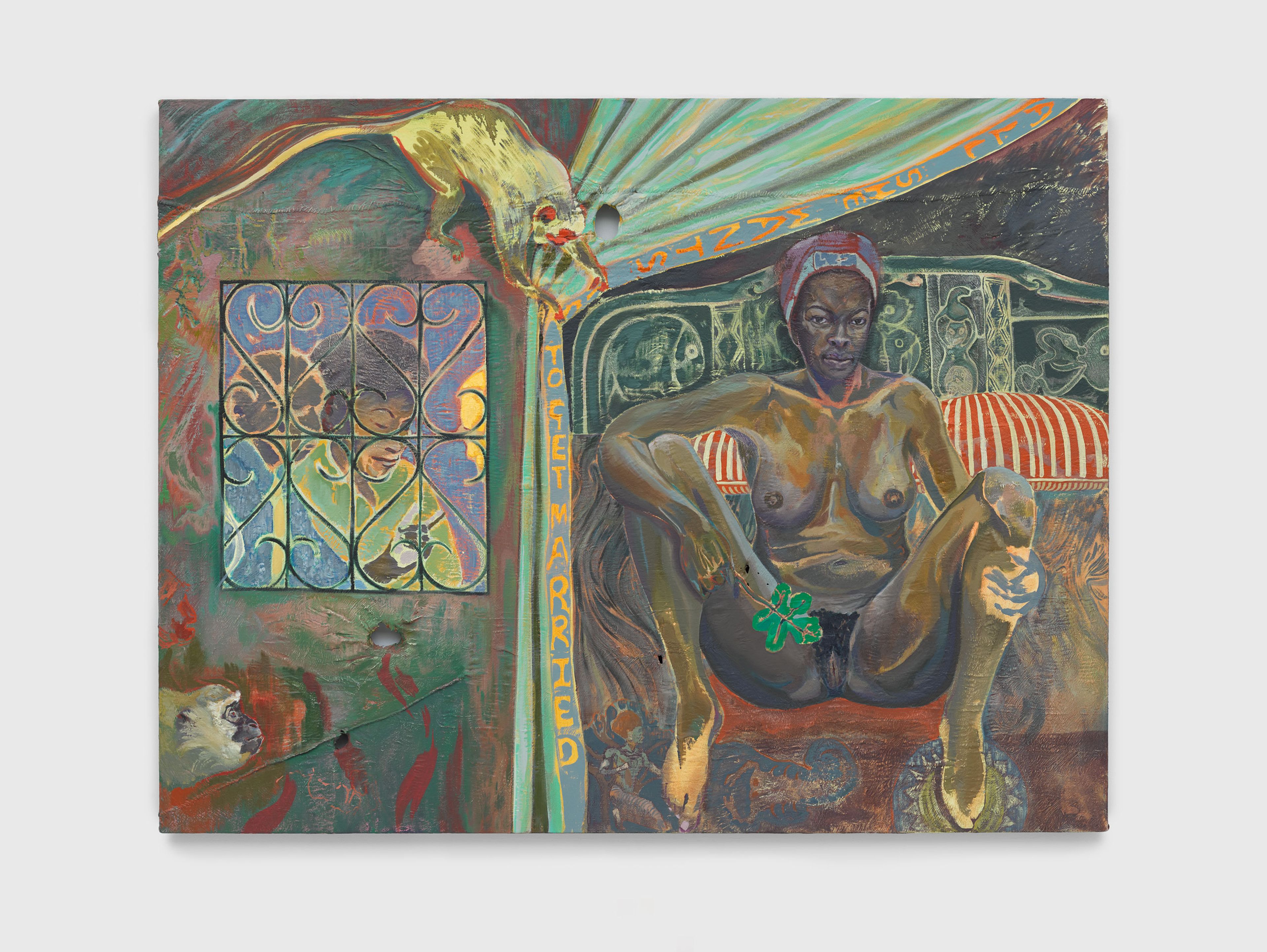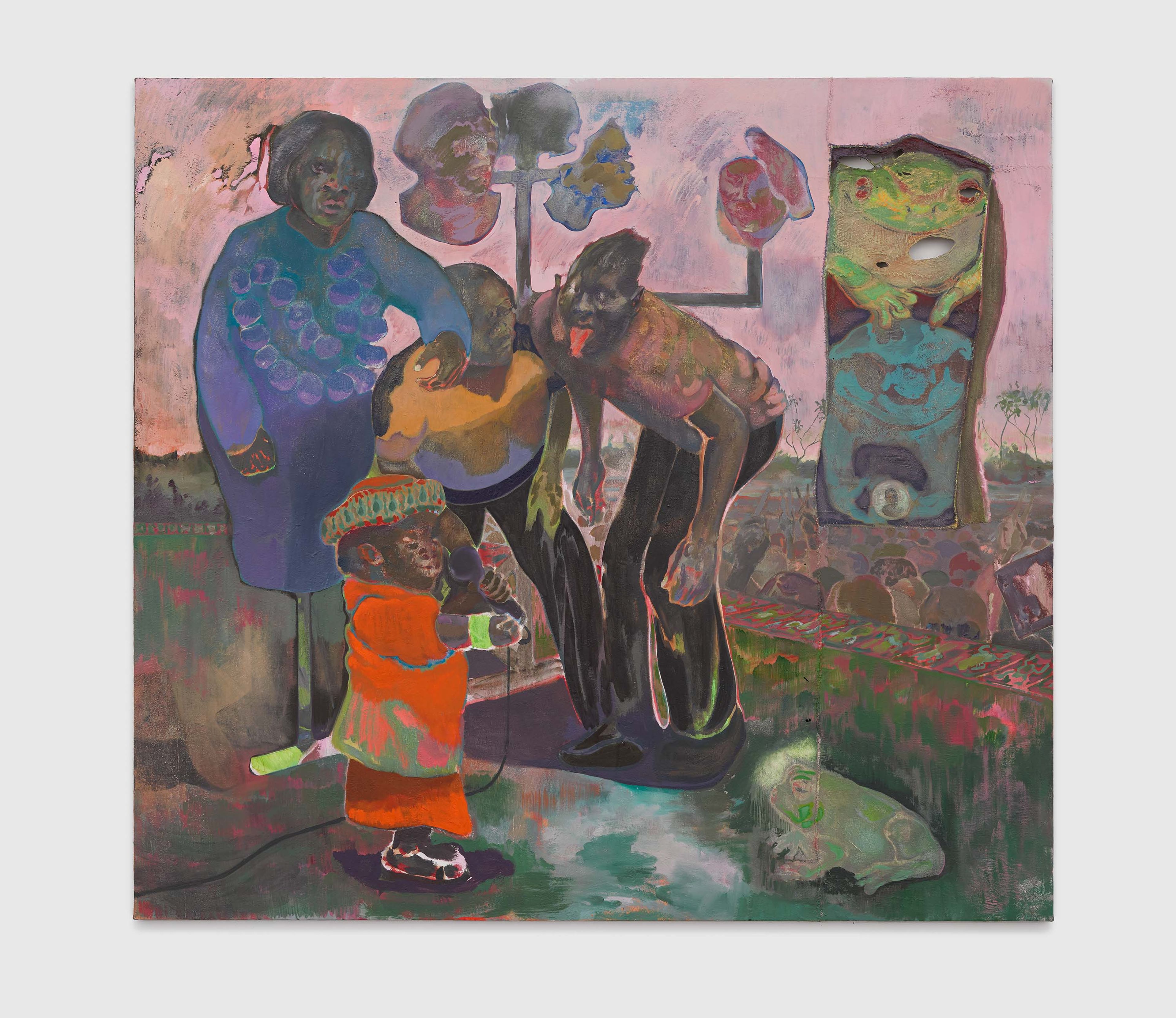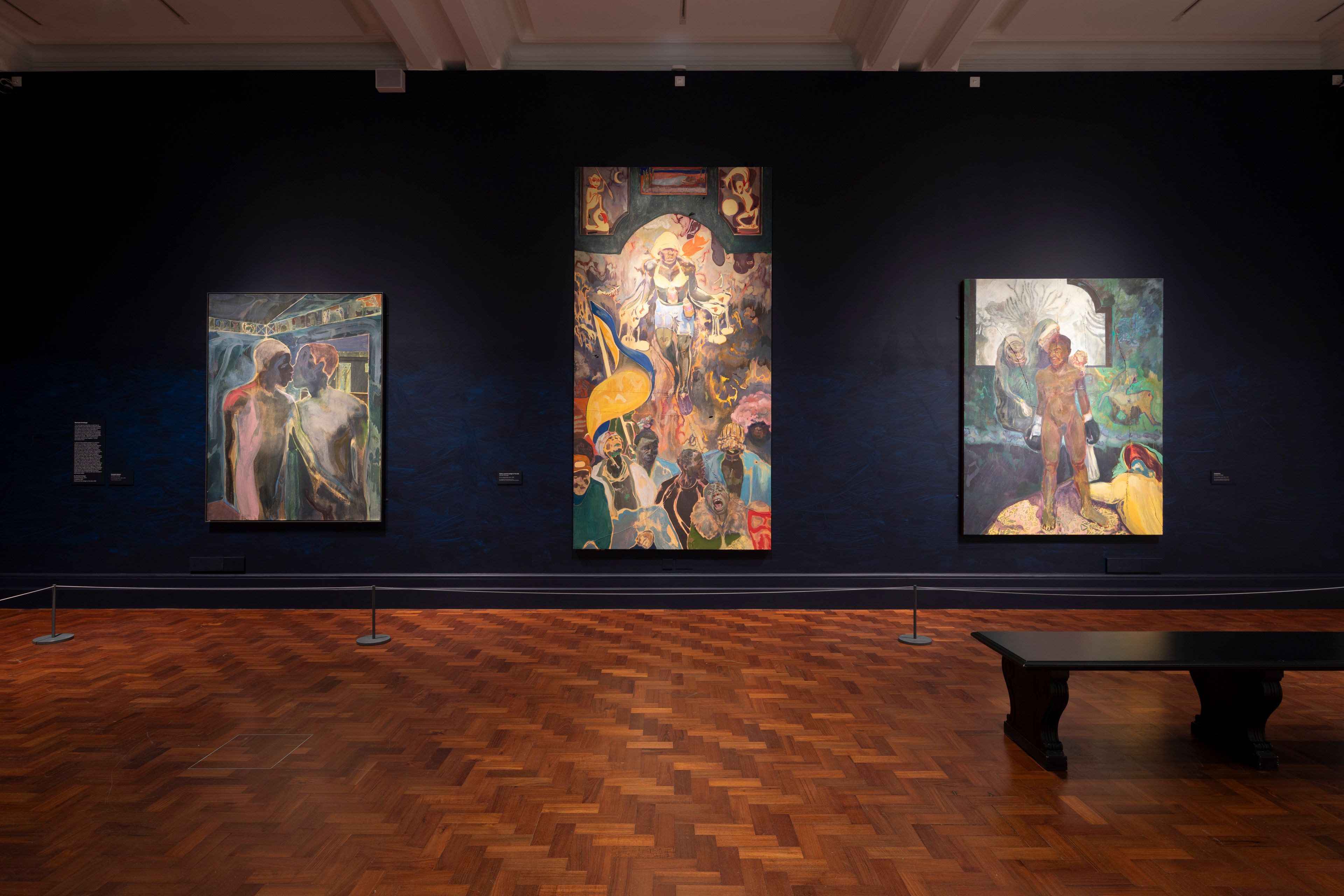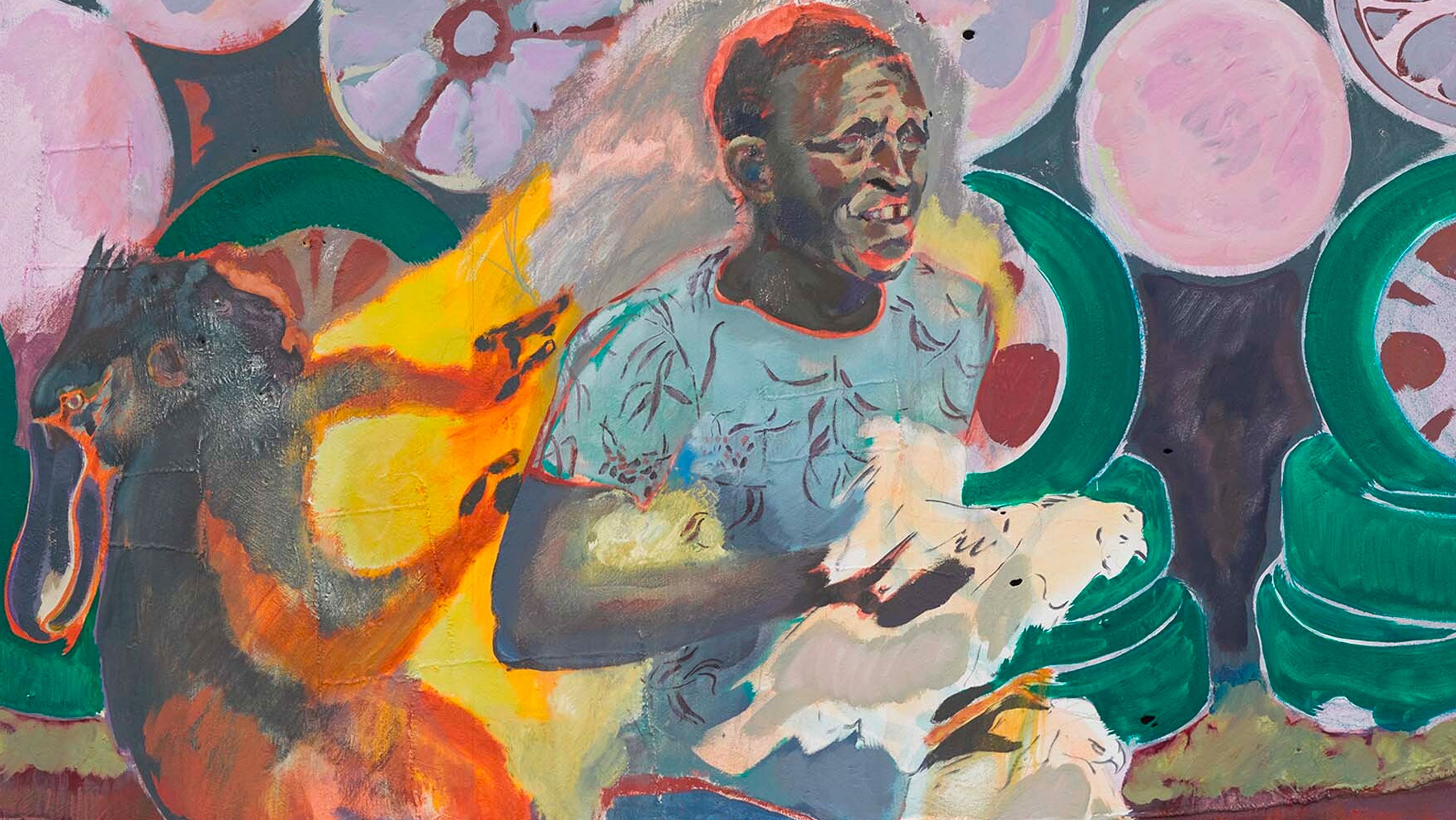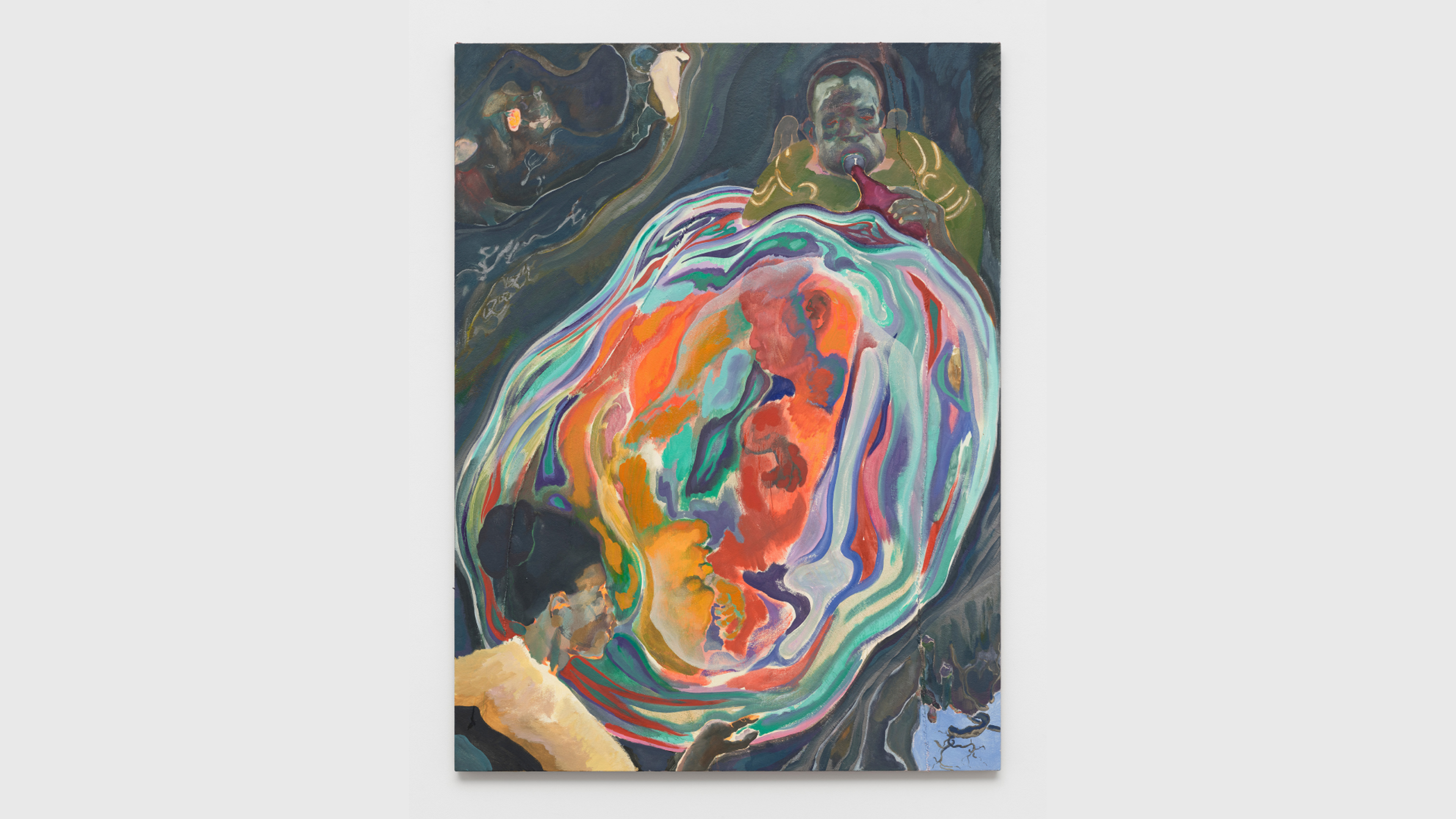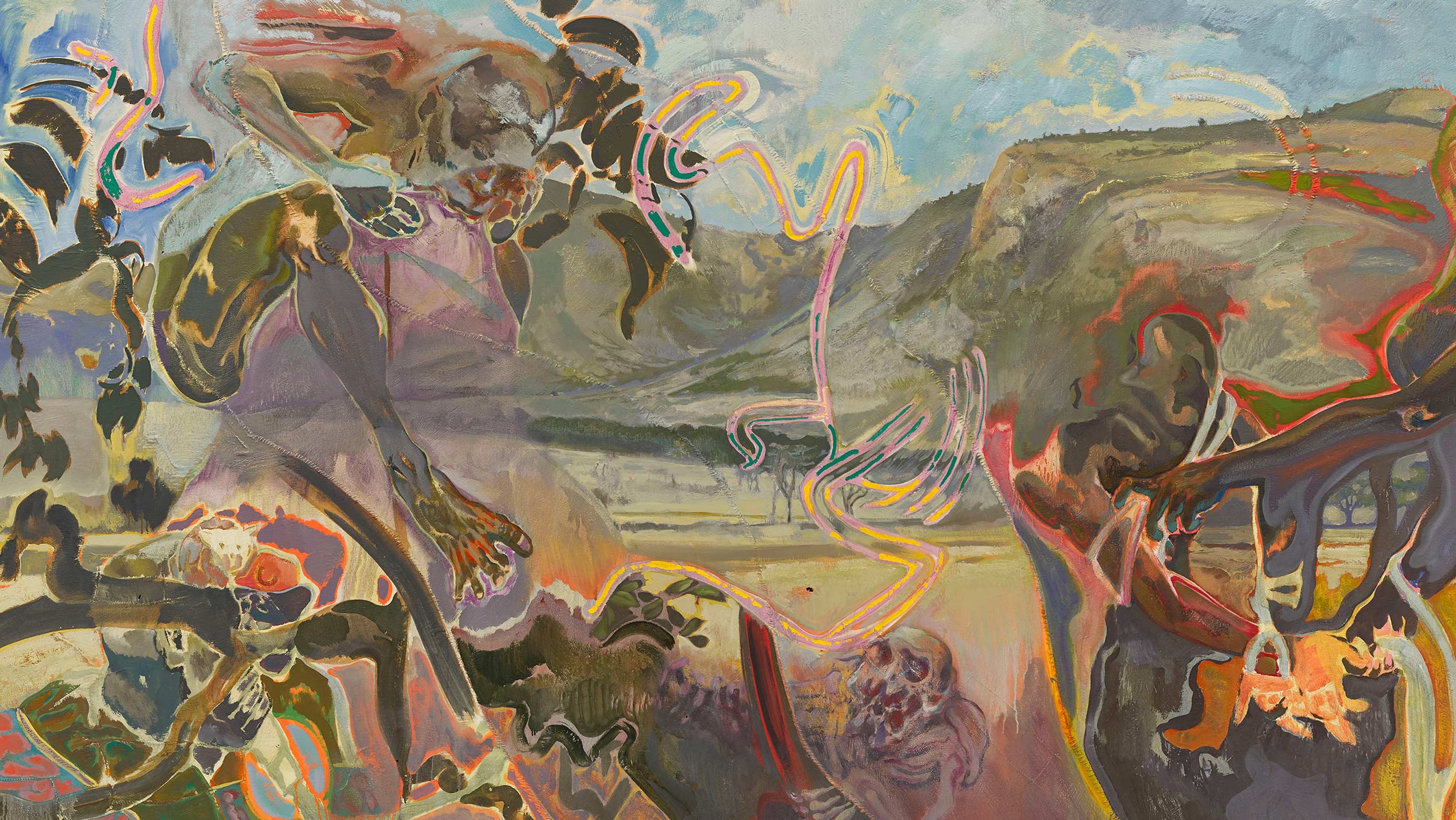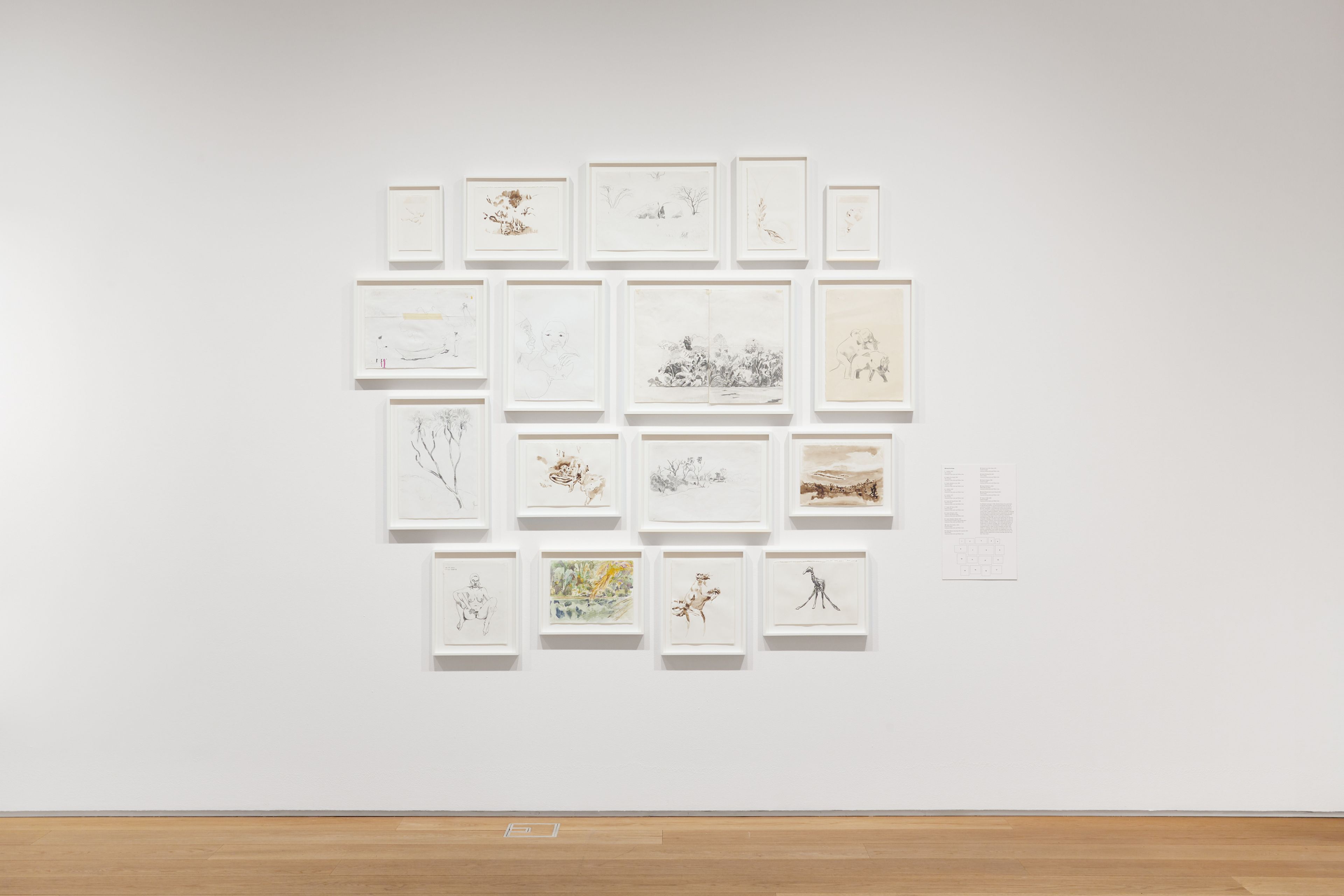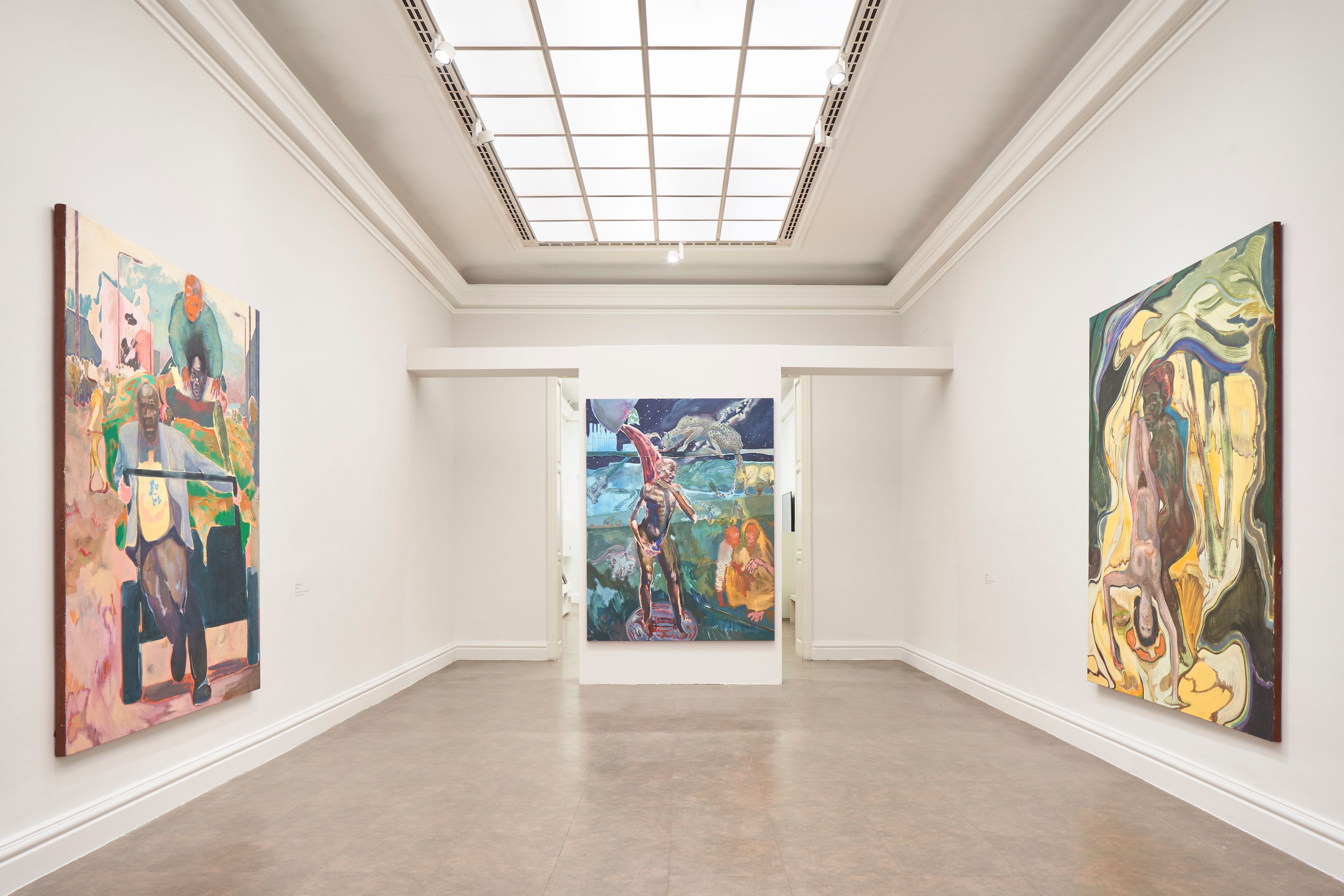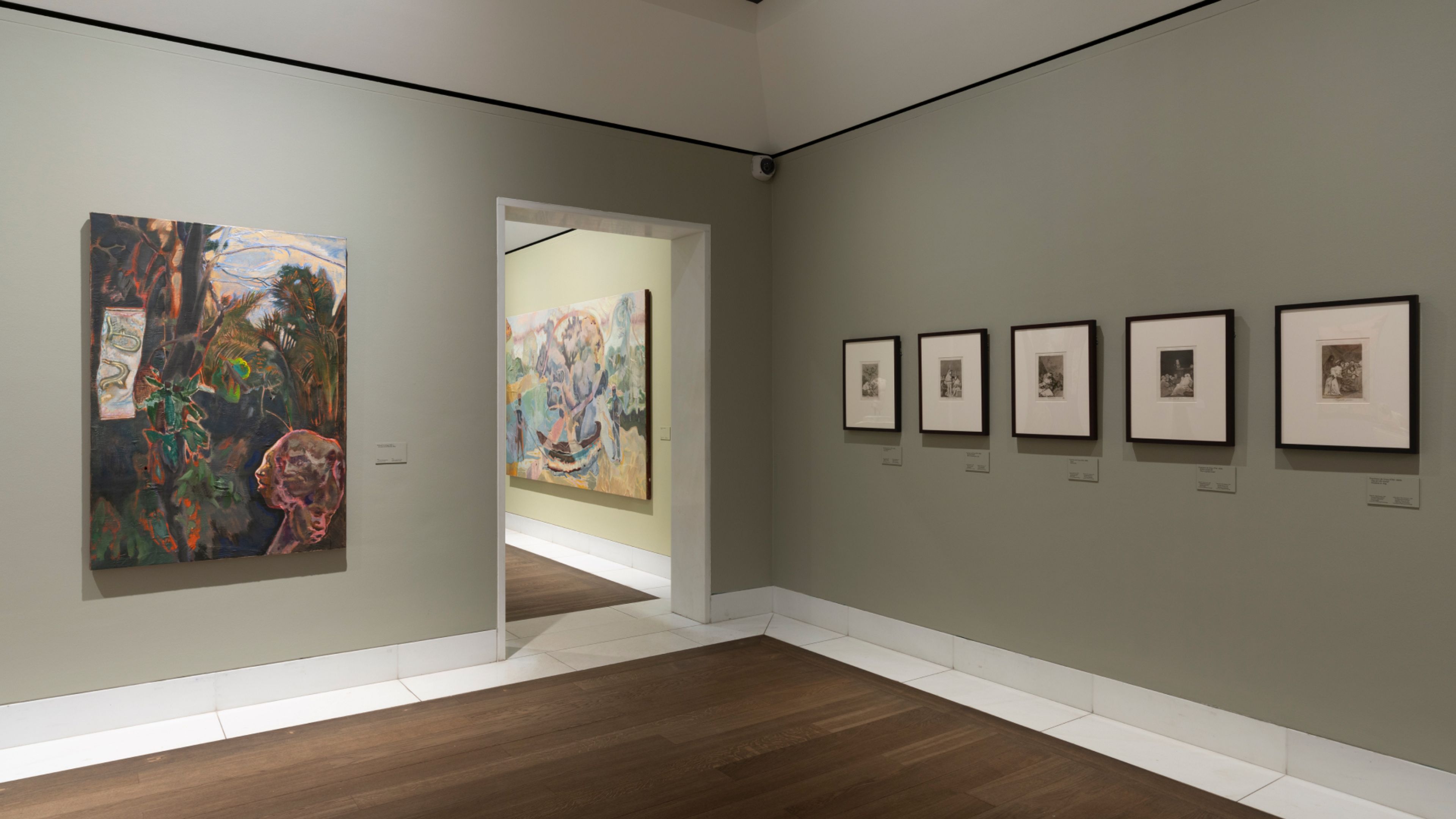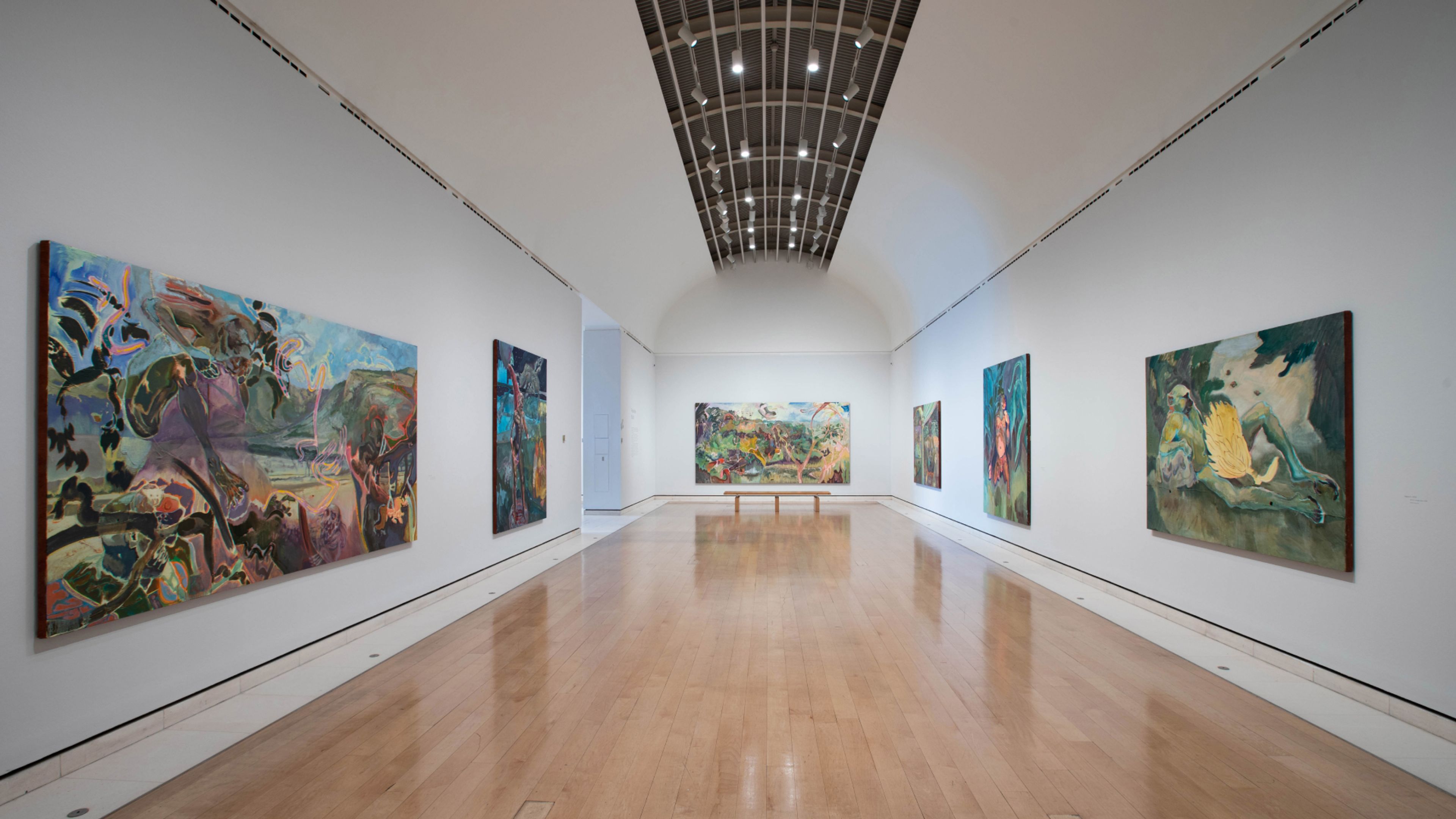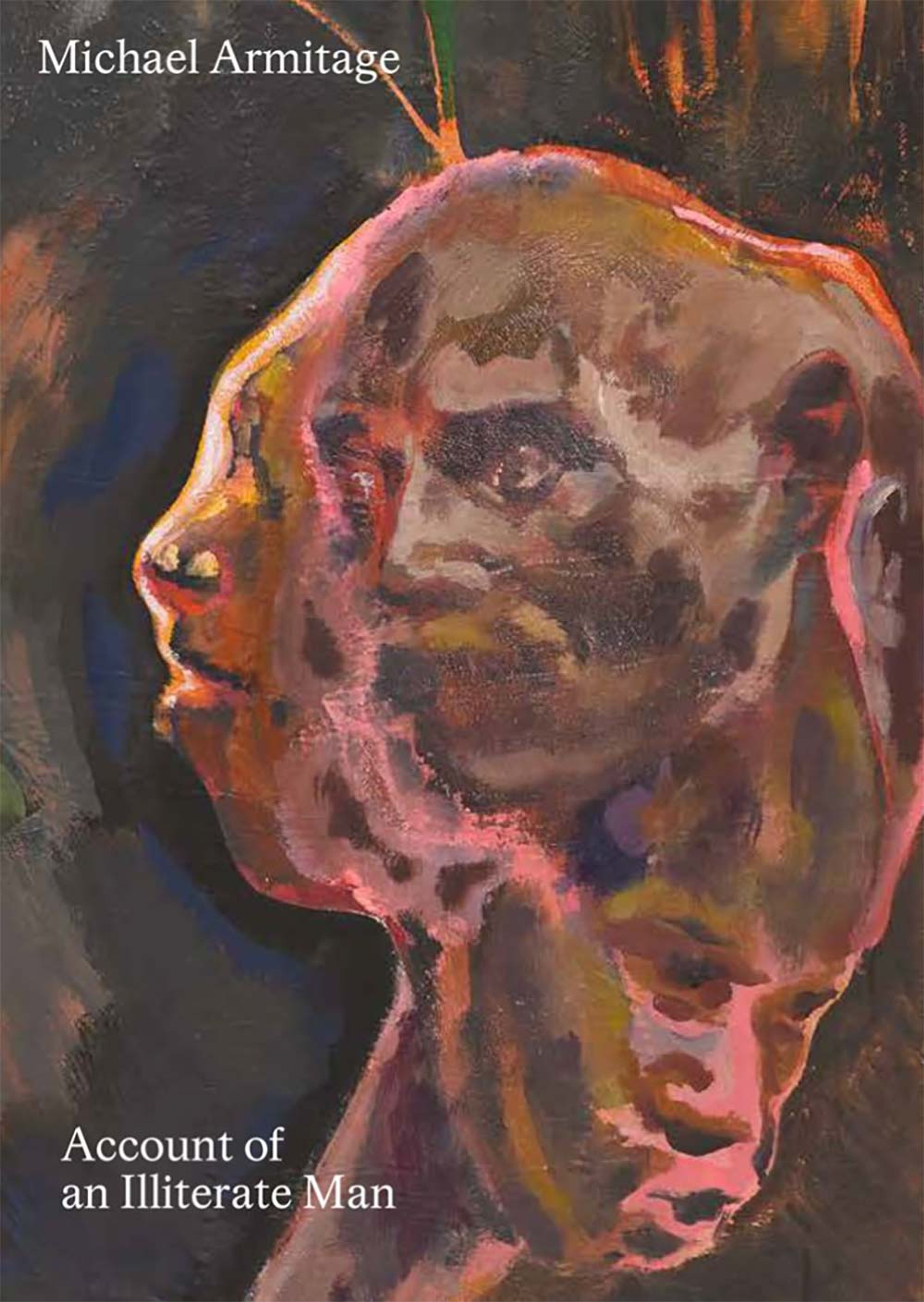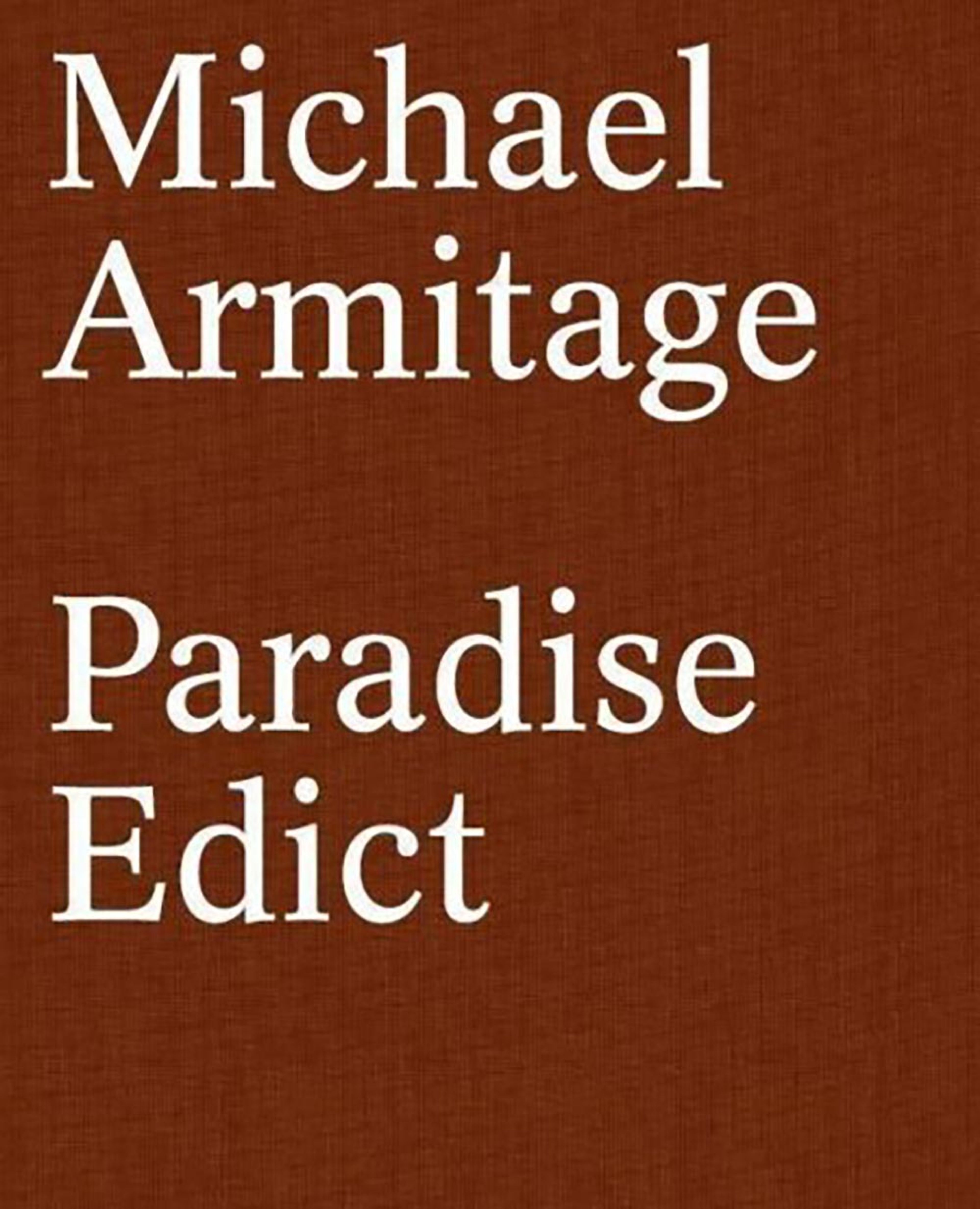Michael Armitage
The paintings and drawings of Kenyan British artist Michael Armitage (b. 1984) give shape to real and imagined histories, constructing deeply rooted impressions of the sociopolitical and cultural contexts that affect contemporary daily life in the region. These sweeping compositions combine visual references to recent events, the art-historical canon, the artist’s East African artistic milieu, and his own memories, while also generating space for the spiritual and the symbolic.
Learn MoreSurvey
Exhibitions
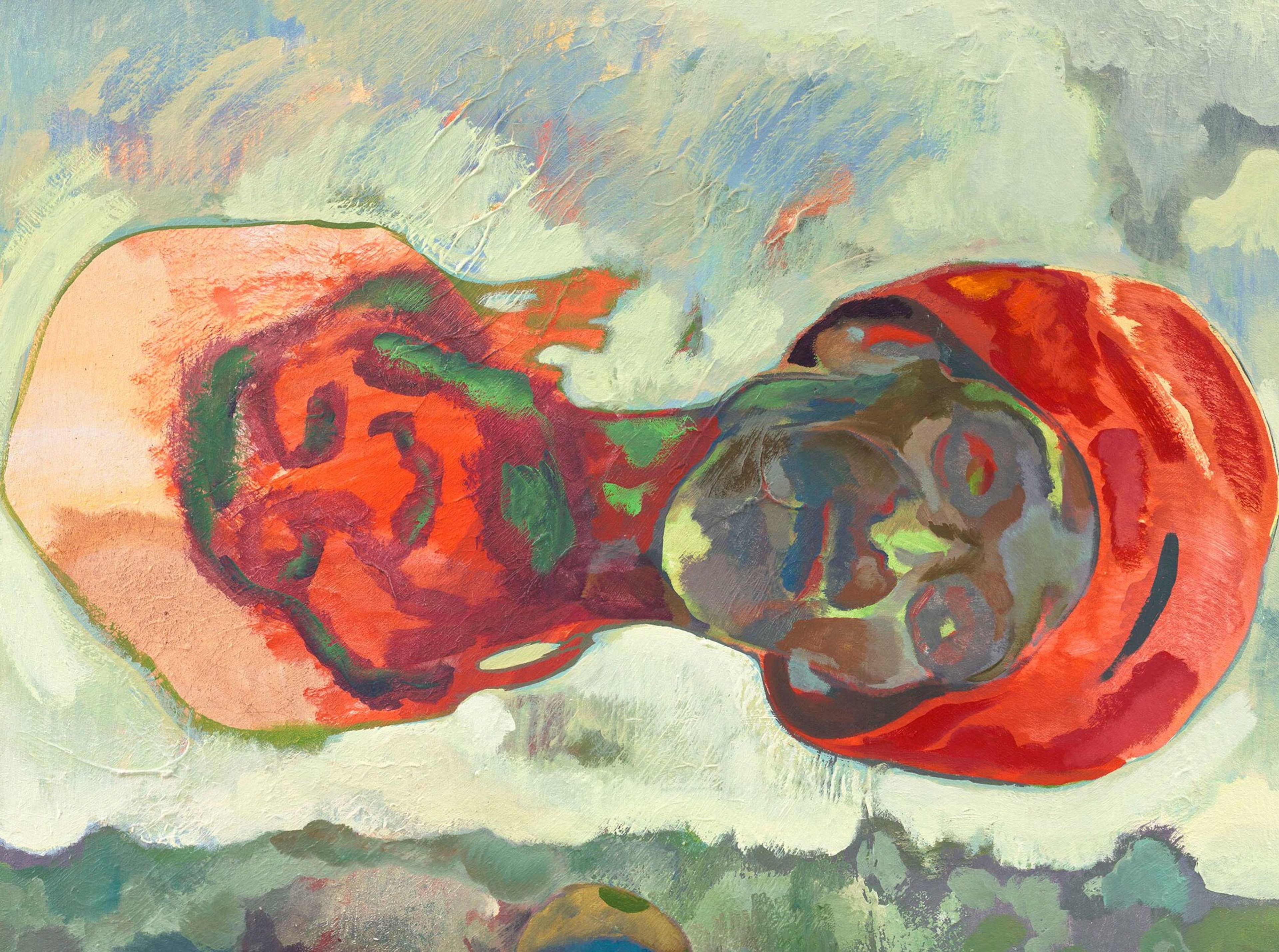
Explore Exhibitions
Artist News
Biography
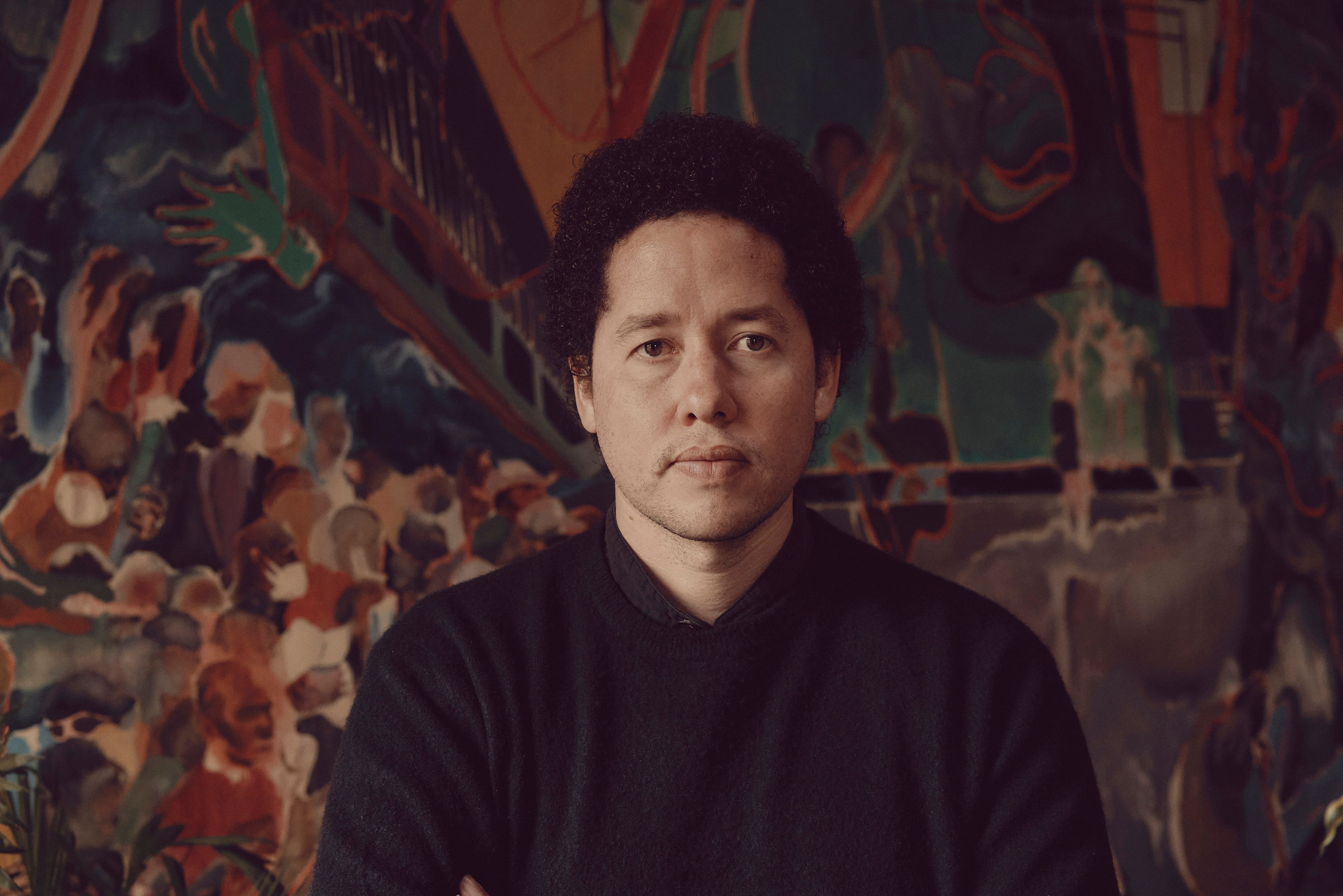
Portrait of Michael Armitage, 2021. Photo by Tom Jamieson
The paintings and drawings of Kenyan British artist Michael Armitage (b. 1984) give shape to real and imagined histories, constructing nuanced, deeply rooted impressions of the myriad sociopolitical and cultural contexts that affect contemporary daily life in the region. Executed in a distinctive lush palette, these sweeping compositions vividly combine visual references to recent events, the art-historical canon, and the artist’s own memories and milieu, while also generating space for the spiritual and the symbolic. Using painting to excavate, process, and reappraise these sources, Armitage’s practice subtly collapses traditional formal considerations, resulting in lyrical tableaux that thrive on the enigmatic slippage of motif and meaning.
Armitage was born in Nairobi, Kenya, and currently lives and works in Nairobi and London. He received his BFA from Slade School of Art, London, in 2007, and a Postgraduate diploma from the Royal Academy Schools, London, in 2010. The artist was the recipient of the Ruth Baumgarte Art Award in 2020, and in 2021, he was elected a Royal Academician of Painting by the Royal Academy of Art, London. The artist’s work has been the subject of solo exhibitions at prominent institutions worldwide. In 2023, Michael Armitage: Pathos and the Twilight of the Idle, a solo presentation of the artist’s work, was on view at Kunsthaus Bregenz, Austria. Michael Armitage: You, Who Are Still Alive, was on view at Kunsthalle Basel in 2022. In the same year, a solo exhibition of the artist’s work curated by Hans Ulrich Obrist was on view at Calcografía Nacional, Real Academia de Bellas Artes de San Fernando, Madrid. In 2021, Michael Armitage: Account of an Illiterate Man was presented by Ny Carlsberg Glyptotek, Copenhagen. The solo exhibition Michael Armitage: Paradise Edict debuted in 2020 at Haus der Kunst, Munich, and traveled to the Royal Academy of Arts, London, in 2021.
Other monographic exhibitions have taken place at the Norval Foundation, Cape Town (2020); Fondazione Sandretto Re Rebaudengo, Turin, Italy (2019); Museum of Contemporary Art Australia, Sydney (2019); The Museum of Modern Art, New York, in collaboration with The Studio Museum in Harlem, New York (2019); South London Gallery (2017); Turner Contemporary, Margate, England (2017); and the Berkeley Art Museum and Pacific Film Archive, California (2016).
Work by Armitage has also been featured in significant group exhibitions. In 2024, Armitage was included in The Time is Always Now: Artists Reframe the Black Figure, a traveling group presentation, which originated at the National Portrait Gallery, London, then traveled to The Box, Plymouth, England, the Philadelphia Museum of Art, and the North Carolina Museum of Art, Raleigh, through 2025. Work by the artist was included in Drawing in the Continuous Present, a 2022 exhibition at The Drawing Center, New York, as well as the 2021 group exhibition British Art Show 9, organized by Hayward Gallery Touring, London, which traveled to numerous venues in the United Kingdom through 2022. In 2019, the artist participated in the 58th Venice Biennale. In 2020, Armitage founded the Nairobi Contemporary Art Institute (NCAI) to promote art by practitioners in East Africa. The groundbreaking nonprofit arts venue hosts exhibitions, curatorial research residencies, libraries and archives, as well as other educational initiatives that enrich the discourse on contemporary creative practices in the region. In addition, the organization has also published a number of artist’s books. In the future, NCAI has plans to develop a postgraduate fine arts program, among other wide-reaching resources.
NCAI also collaborates with writers and artists from East Africa to publish original commissioned essays, interviews, articles, and reports. NCAI's robust publications and artist books offer insight, research, and thought leadership that underscores its commitment to documentation of the artists’ creativity. David Zwirner Books proudly supports and distributes the NCAI titles Mwili, Akili Na Roho / Body, Mind, and Spirit and I Hope So: Sane Wadu internationally.
Armitage’s work has been represented by David Zwirner since 2022. In 2025, Michael Armitage: Crucible was on view at the gallery’s 19th Street location in New York, marking the artist’s first solo presentation with David Zwirner since his representation was announced. He lives and works in Indonesia and Nairobi.
Works by the artist are held in distinguished institutional collections worldwide,including the Art Gallery of New South Wales, Sydney; Art Institute of Chicago; Arts Council Collection, Southbank Centre, London; Astrup Fearnley Museet, Oslo; Berkeley Art Museum and Pacific Film Archive, California; Centre Pompidou, Paris; Dallas Museum of Art; Fondation Beyeler, Basel/Riehen, Switzerland; Fondazione Sandretto Re Rebaudengo, Turin; Government Art Collection, London; Guggenheim Abu Dhabi; Hirshhorn Museum and Sculpture Garden, Washington, DC; Kistefos Museum, Jevnaker, Norway; Kunstmuseum Basel; Los Angeles County Museum of Art; The Metropolitan Museum of Art, New York; Museum of Contemporary Art Chicago; Museum of Contemporary Art, Los Angeles; Museum of Fine Arts, Houston; The Museum of Modern Art, New York; Museum Voorlinden, Wassenaar, Netherlands; Nasher Museum of Art, Duke University, Durham, North Carolina; National Galleries of Scotland, Edinburgh; National Gallery of Australia, Parkes; National Gallery of Canada, Ottawa; National Portrait Gallery, London; Norval Foundation Collection, Cape Town; Pinault Collection, Paris; The Roberts Institute of Art, London; Samdani Art Foundation, Dhaka; San Francisco Museum of Modern Art; Solomon R. Guggenheim Museum, New York; Tate, United Kingdom; Victor Pinchuk Contemporary Art Foundation, Kyiv; and Yuz Foundation Collection, Shanghai.
Selected Press
Selected Titles

Request more information
